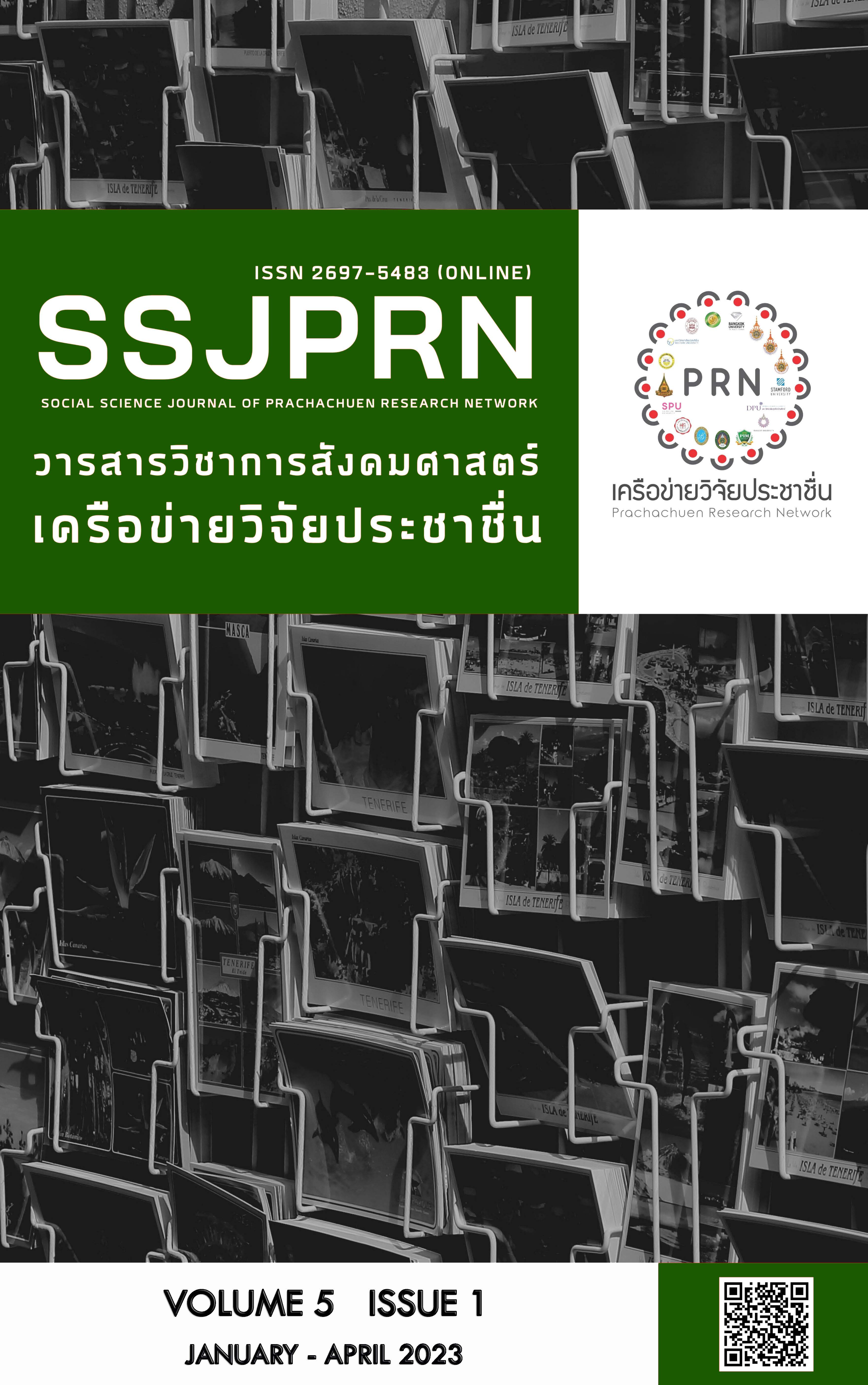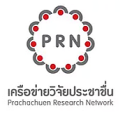พฤติกรรมผู้บริโภคและความพึงพอใจของผู้ใช้ในกรุงปักกิ่งที่ใช้แอปพลิเคชันพยากรณ์สภาพอากาศของจีนในประเทศจีน
คำสำคัญ:
พฤติกรรมผู้บริโภค , ความพึงพอใจของลูกค้า , แอปพลิเคชันสภาพอากาศของจีนบทคัดย่อ
การวิจัยครั้งนี้มีวัตถุประสงค์เพื่อ 1) ศึกษาความสัมพันธ์ระหว่างลักษณะทางประชากรศาสตร์กับพฤติกรรมผู้ใช้แอปพลิเคชันพยากรณ์สภาพอากาศของจีนในกรุงปักกิ่ง 2) ศึกษาความแตกต่างของลักษณะทางประชากรศาสตร์ที่มีผลต่อระดับความพึงพอใจของผู้ใช้แอปพลิเคชันพยากรณ์สภาพอากาศของจีนในกรุงปักกิ่ง 3) ศึกษาความแตกต่างของพฤติกรรมของผู้ใช้แอปพลิเคชันพยากรณ์สภาพอากาศของจีนในกรุงปักกิ่ง และ 4) เพื่อศึกษาความสัมพันธ์ระหว่างเพศและประเภทบุคลิกภาพของผู้ใช้ในกรุงปักกิ่งที่ส่งผลต่อความพึงพอใจแอปพลิเคชันพยากรณ์สภาพอากาศของจีน ประชากรของการศึกษานี้ไม่ทราบจำนวน ทำการกำหนดขนาดกลุ่มตัวอย่างจำนวน 385 คน ใช้แบบสอบถามเป็นเครื่องมือในการเก็บรวบรวมข้อมูล สุ่มตัวอย่างแบบตามความสะดวก ทดสอบสมมุติฐานด้วยสถิติการทดสอบไคสแควร์ การเปรียบเทียบค่าเฉลี่ยของกลุ่มตัวอย่างสองกลุ่ม และการวิเคราะห์ความแปรปรวนทางเดียว วิเคราะห์ข้อมูลโดยใช้ค่าความถี่ ค่าร้อยละ ค่าเฉลี่ย และค่าส่วนเบี่ยงเบนมาตรฐาน ผลการวิจัยพบว่า 1) ปัจจัยส่วนบุคคล เพศ อาชีพ และบุคลิกภาพมีความสัมพันธ์กับวิธีที่ผู้ใช้แอปพลิเคชันพยากรณ์สภาพอากาศในประเทศจีนที่ระดับ 0.05 2) ปัจจัยส่วนบุคคล ได้แก่ อายุและรายได้เฉลี่ยต่อเดือนที่แตกต่างกันมีผลต่อความพึงพอใจของผู้คนต่อแอปพลิเคชันพยากรณ์สภาพอากาศในประเทศจีนอย่างมีนัยสำคัญทางสถิติ 3) ผู้ใช้แอปพลิเคชันพยากรณ์สภาพอากาศจีนมีพฤติกรรมแตกต่างกันในแง่ของจำนวนครั้งที่ใช้แอปพลิเคชันพยากรณ์สภาพอากาศและระดับความพึงพอใจในการใช้งานอย่างมีนัยสำคัญทางสถิติที่ระดับ 0.05 และ 4) เพศ ประเภทบุคลิกภาพ และความพึงพอใจต่อการใช้งานแอปพลิเคชันพยากรณ์สภาพอากาศในจีนในด้านราคามีความสัมพันธ์ระหว่างกันอย่างมีนัยสำคัญทางสถิติ
เอกสารอ้างอิง
Acebron, L. B., & Dopico, D. C. (2000). The importance of intrinsic and extrinsic cues to expected and experienced quality: An empirical applications for beef. Food quality and preference, 11(3), 229-238.
Aldowah, H., Ghazal, S., Umar, I. N., & Muniandy, B. (2017, September). The impacts of demographic variables on technological and contextual challenges of e-learning implementation. Journal of Physics: Conference Series, 892, 1-12.
Burson, B., & Matthews, K. (1981). The Type A coronary prone behaviour pattern and reactions to uncontrollable stress: An analysis of performance strategies, affect and attributions during failure. Journal of Personality and Social Psychology, 40, 906-918.
Cochran, W.G. (1977). Sampling Techniques (3rd ed.). New York: John Wiley & Sons.
Kantuam, N., Sanmuang, K., & Puangthammarat, K. (2019). Marketing mix affecting consumers’ purchase of online products in Mueang district, Ratchaburi province. Social Science Journal of Prachachuen Research Networks, 1(2), 1-12.
Karaveg, C. (2021). Technology acceptance affecting purchasing behavior among online apparel consumers. Interdisciplinary Research Review, 16(4), 16–23.
Kotler, P., & Keller, K. L. (2016). Marketing management (15th global edition). Edinburgh: Pearson Education.
Mohajerani, P., & Miremadi, A. (2013). Exploring two main perspectives towards customer satisfaction in hotel industry: managers and customers. International Journal of Academic Research in Business and Social Sciences, 3(9), 245-272.
Noh, N. M., Hamzah, M., & Abdullah, N. (2016). The Influence of Demographic Factor on Personal Innovativeness towards Technology Acceptance. Malaysian Online Journal of Educational Technology, 4(1), 68-75.
Oliver, R. L. (1980). A cognitive model of the antecedents and consequences of satisfaction decisions. Journal of marketing research, 17(4), 460-469.
Özbek, V., Alnıaçık, Ü., Koc, F., Akkılıç, M. E., & Kaş, E. (2014). The impact of personality on technology acceptance: A study on smartphone users. Procedia-Social and Behavioral Sciences, 150, 541-551.
Pantano, E., & Di Pietro, L. (2012). Understanding consumer acceptance of technology-based innovations in retailing. Journal of technology management & innovation, 7(4), 1-19.
Rerkpichai, C. (2022). Future vision of digital marketing for Metaverse. RICE Journal of Creative Entrepreneurship and Management, 3(1), 66-68.
Sombultawee, K., & Saisanit, M. (2022). The influence of technology adoption and the role of demegraphic as the moderators on Thai consumers intention to buy e-Books. Parichart Journal Thaksin University, 35(2), 129-147.
Sriratana, J. (2021). Consumer behavior through online food ordering applications during the virus covid-19 outbreak. Humanities and Social Science Research Promotion Network Journal, 4(3), 118-128.
Ugwu, K. E., Emerole, I., Duru, E. E., & Kekeocha, M. (2021). Demographic Factor, Adoption of Technology and Competitive Advantage in Nigeria. International Journal of Innovative Science, Engineering & Technology, 8(8), 191-212.
Worapongpat, N. (2022). Behavior of facebook application and Line affecting the purchasing decision to tourists’ products and services: A case study of Don Wai floating market after the covid-19 situation. Journal of Value Chain Management and Business Strategy, 1(2), 41-53.
Yang, K., Choi, J. G., & Chung, J. (2021). Extending the Technology Acceptance Model (TAM) to explore customer behavioural intention to use Self-Service Technologies (SSTs) in Chinese budget hotels. Global Business and Finance Review, 26(1), 79-94.
ดาวน์โหลด
เผยแพร่แล้ว
รูปแบบการอ้างอิง
ฉบับ
ประเภทบทความ
สัญญาอนุญาต
ลิขสิทธิ์ (c) 2023 วารสารวิชาการสังคมศาสตร์เครือข่ายวิจัยประชาชื่น

อนุญาตภายใต้เงื่อนไข Creative Commons Attribution-NonCommercial-NoDerivatives 4.0 International License.
บทความที่ได้รับการตีพิมพ์เป็นลิขสิทธิ์ของวารสารวิชาการสังคมศาสตร์เครือข่ายวิจัยประชาชื่น







